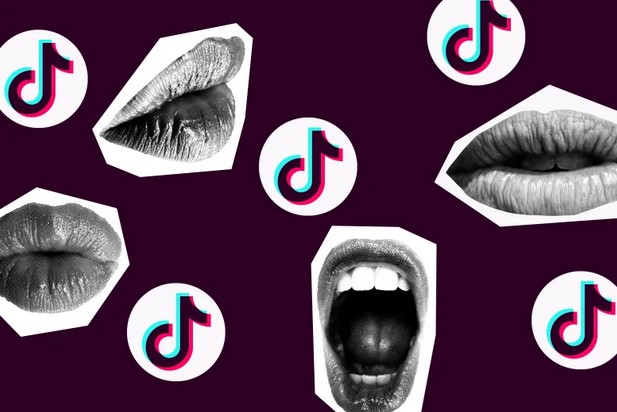Social media has had a profound impact on communications in the United States, transforming the way people connect, share information, and engage with one another. It has become an integral part of daily life for millions of Americans and in particular, various government actors and agencies. For example, social media provides a new platform for governments to engage with citizens, disseminate information, and gather public feedback. Due to the significance of social media in government-to-citizen communication, courts have concluded that social media is the new defining democratic forum. For instance, in Packingham v. North Carolina, the Court stated, “While in the past there may have been some difficulty in identifying the most important places (in a spatial sense) for the exchange of views, today the answer is clear. It is cyberspace—the ‘vast democratic forums of the Internet’ in general … and social media in particular.” This shift from traditional to modern communication modes has resulted in several challenges to First Amendment rights. Government actors have used social media to block constituents’ access to information.
Arizona Counties and Representatives Increasingly Use Social Media
Throughout the nation, there has been a shift in reliance on social media as a news source; however, Arizona is a particularly striking example of this dramatic shift and the associated risks.
Most of Arizona’s counties have social media pages where constituents can receive information about government activities. For example, Maricopa and Pima, Arizona’s two largest counties, interact with citizens through various platforms such as YouTube, Facebook, and Twitter. (See table 2 below). Smaller counties also use these platforms to communicate with the public; however, rural citizens more heavily rely on access to public officials’ social media accounts for news regarding governance, policy, and public services in the wake of the dwindling presence of traditional media. See generally Penelope Abernathy, Arizona, The Expanding News Desert, (2023), https://www.usnewsdeserts.com/states/arizona/. [J(1] [A(2] [J(3] Arizona’s local government officials have somewhere around two hundred and thirteen social media accounts between both chambers of the Arizona legislature, averaging roughly two accounts per representative or senator. Meanwhile, every member of Arizona’s delegation to Washington has at least three different social media accounts. (See table 1 below). The growing use of social media by government actors and agencies makes the curtailment of freedoms on these platforms more concerning.
Table 1: Arizona Politician’s Social Media Usage
Table 2: Arizona Counties’ Social Media Usage
| County | Type of Social Media | Link/Reference |
| Apache County | Website Facebook | |
| Cochise County | Facebook/Instagram/Next-door | Website Facebook Instagram Nextdoor |
| Coconino County | Facebook/Instagram/YouTube/Twitter | Website Facebook Instagram Twitter YouTube |
| Gila County | Facebook/YouTube | Website Facebook YouTube |
| Graham County | Website Facebook | |
| Greenlee County | N/A | Website |
| La Paz County | Website Facebook | |
| Maricopa County | Facebook/Instagram/YouTube/Twitter | Website Facebook Instagram Twitter YouTube |
| Mohave County | Facebook/YouTube/ Twitter | Website Facebook Twitter YouTube |
| Navajo County | Facebook/YouTube/ Twitter | Website Facebook Twitter YouTube |
| Pima County | Facebook/Instagram/YouTube/Twitter/ Pinterest/Flickr | Website Facebook Instagram Twitter YouTube Pinterest Flickr |
| Pinal County | Facebook/Instagram/YouTube/Twitter | Website Facebook Instagram Twitter YouTube |
| Santa Cruz County | Facebook/Twitter | Website Twitter Facebook |
| Yavapai County | Facebook/Instagram/YouTube/Twitter | Website Facebook Instagram Twitter YouTube |
| Yuma County | N/A | Website |
The Day My State Representative Blocked Me!
In Arizona, it is common for public officials to use social media’s blocking function to restrict access to information, suppress dissent, and create a false narrative in support of activities that would otherwise draw criticism. Representative Bob Thorpe of the Arizona House, for instance, blocked users, including news reporters, from his Twitter account in 2013 after receiving censure for a racially insensitive tweet. Jeremy Duda, Thorpe Erases Tweets, Locks Down Twitter Account Following Racism Accusations, AZCapitol Times, August 14, 2013. The tweet followed U.S. Attorney General Eric Holder’s announcement that the Department of Justice would not pursue mandatory minimum prison sentences for a large number of low-level, nonviolent drug offenders. Id.[J(4] [A(5] [J(6] [A(7] Thorpe tweeted, “Why is Holder [U.S. Attorney General] now Soft on Crime? Perhaps: blacks=12%-13% US population, but make up 40/1% (2.1 million) of male inmates in jail or prison!” Id.
In early 2022, Joshua Gray, a politically engaged Arizonan and frequent Twitter user, was blocked from then Representative Anthony Kern’s[J(8] [A(9] Twitter account. The block followed Mr. Gray’s critique of Senator Kern’s involvement in the January 6th Capitol attack.[J(10] [A(11] The criticisms leveled against Senator Kern were not well received and, according to Gray, Senator Kern responded to Gray’s criticisms with a “snarky response[J(12] [A(13] [J(14] .” Id. Despite having negligible contact with Kern, Kern blocked Mr. Gray. Id. In 2022, Kern was elected as Mr. Gray’s state representative, much to his dismay. Id.
Senator Kern uses Twitter for various purposes, including discussing his political beliefs, expressing opinions on significant issues, and disseminating information about local, state, and federal affairs. Id. Twitter is not the only social media platform used by Senator Kern, but it is by far his preferred platform. Despite various attempts to contact Senator Kern regarding the block, Gray has not received a response from Kern. Id. Gray said, “I’ve written and called his office a bunch of times to see if he could unblock me, but I haven’t heard back.” Id. This block effectively prevents Gray from accessing Senator Kern’s governance and policy perspectives. Id. Gray indicated that since the block, he “ha[sn’t] had contact with him since.” Id.



